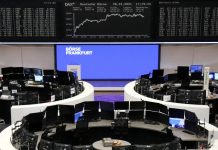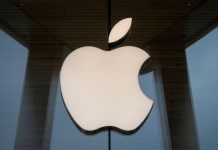U.S. consumer spending increased for a second straight month in June, setting up consumption for a rebound in the third quarter, though the recovery could be limited by a resurgence in Covid-19 cases and the end of expanded unemployment benefits.
The Commerce Department said on Friday that consumer spending, which accounts for more than two-thirds of U.S. economic activity, rose 5.6% last month after a record 8.5% jump in May as more businesses reopened. Consumers stepped up purchases of clothing and footwear. They also spent more on healthcare, dining out and on hotel and motel accommodation.
Economists polled by Reuters had forecast consumer spending would advance 5.5% in June. When adjusted for inflation, consumer spending increased 5.2% last month after surging 8.4% in May.
The data was included in Thursday’s advance gross domestic product report for the second quarter, which showed the economy shrinking at a record 32.9% annualized rate as consumer spending tanked at a historic 34.6% pace.
With June’s increase, inflation-adjusted consumer spending has pulled out of April’s deep hole, though it remains below its pre-pandemic level. This puts spending on a higher growth trajectory heading into the July-September quarter.
But the explosion of Covid-19 infections, especially in the densely populated South and West regions where authorities in hard-hit areas are closing businesses again and pausing reopenings, is casting doubt on the magnitude of the expected surge in third-quarter consumer spending.
In addition, tens of millions of unemployed Americans will on Friday lose $600 in additional weekly jobless benefits after the White House and Congress failed to reach an agreement to extend the supplement, which has allowed them to pay rent and buy food among other expenses.
Stock index futures were set to open higher after tech titans Apple, Amazon.com and Facebook posted blowout quarterly earnings, helping keep nagging nerves over the spread of the novel coronavirus at bay. The dollar was largely flat against a basket of currencies. Prices of longer-dated U.S. Treasurys fell.
In June, consumer spending was boosted by a 6.4% rise in purchases of goods. Outlays on services increased 5.2%.
Personal income dropped 1.1% last month after decreasing 4.4% in May as government welfare payments slowed. Wages increased 2.2% after rebounding 2.6% in May. The saving rate fell to a still-high 19% from 24.2% in May.
Monthly inflation ticked up in June, driven by food and energy goods and services prices, though the trend remained muted. The personal consumption expenditures (PCE) price index excluding the volatile food and energy components rose 0.2%, matching May’s gain.
In the 12 months through June, the so-called core PCE price index increased 0.9% after rising 1.0% in May. The core PCE index is the preferred inflation measure for the Federal Reserve’s 2% target.






























